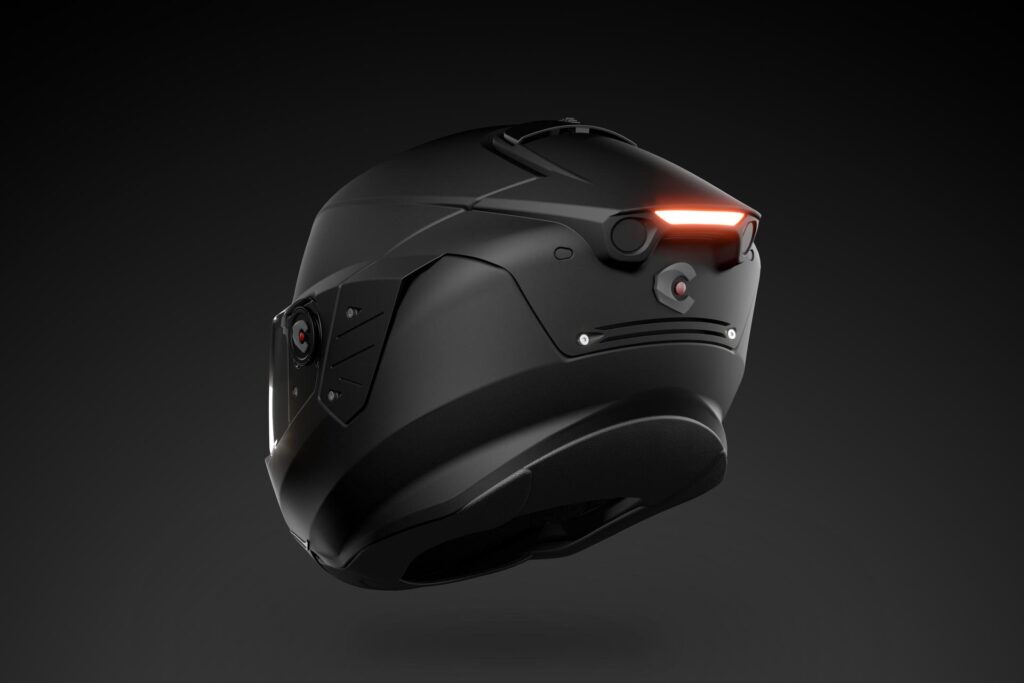Motorcycle safety is entering a new era with the introduction of the AI-powered motorcycle helmet, a groundbreaking innovation that claims to eliminate 100% of blind spots for riders. Designed to enhance situational awareness and reduce accidents, this helmet leverages advanced technology to provide a safer and smarter riding experience.
Blind spots have long been a critical safety concern for motorcyclists, leading to countless accidents each year. With this new helmet, riders gain a full 360-degree view of their surroundings, thanks to its integrated AI features. This article dives into how this helmet works, its key features, benefits, and the potential impact on the motorcycle industry.
Understanding the Problem: Blind Spots and Rider Safety
Motorcycles are inherently more vulnerable than other vehicles on the road. Riders often rely on peripheral vision and mirrors to navigate, but blind spots can still obstruct their ability to see nearby vehicles or obstacles. According to the National Highway Traffic Safety Administration (NHTSA), blind spots contribute significantly to motorcycle-related accidents, particularly during lane changes or when navigating busy intersections.
Traditional safety solutions, like convex mirrors or riding techniques that involve frequent head checks, address the issue only partially. This is where the AI-powered helmet comes in, offering a comprehensive solution by eliminating blind spots altogether.
How the AI Motorcycle Helmet Works
The AI motorcycle helmet uses cutting-edge technology to provide riders with real-time visual and audio feedback. Here’s a breakdown of its core components:
Integrated Cameras for 360-Degree View
The helmet features multiple high-resolution cameras strategically placed to capture a full view of the rider’s surroundings. These cameras feed live video into an internal display within the helmet, giving the rider a seamless panoramic view.
Augmented Reality (AR) Heads-Up Display (HUD)
The AR HUD projects vital information directly onto the helmet’s visor, allowing the rider to see blind spot visuals, speed data, and GPS navigation without taking their eyes off the road.
AI-Powered Object Detection
The helmet’s AI system processes the camera feed to identify nearby vehicles, pedestrians, and other potential hazards. It highlights these objects on the HUD and provides audio alerts for immediate threats.
Advanced Communication Systems
The helmet integrates with Bluetooth and Wi-Fi to connect with smartphones, enabling hands-free calls, music streaming, and navigation. It can also communicate with other smart helmets for group riding coordination.
Voice Control
The AI system responds to voice commands, allowing riders to control functions like adjusting the HUD, answering calls, or switching between navigation modes.
Key Features of the AI Motorcycle Helmet
Blind-Spot Elimination
The helmet provides real-time visuals of all blind spots, ensuring that no vehicle or obstacle goes unnoticed.
Crash Detection and SOS Alert
In the event of an accident, the helmet detects the crash and sends an SOS alert to emergency contacts with the rider’s GPS location.
Adaptive Noise Control
The helmet filters out wind and road noise, allowing riders to focus on essential audio cues without distractions.
Weather Adaptability
Equipped with anti-fog technology and UV protection, the helmet is suitable for all weather conditions.
Battery Life and Charging
The helmet includes a long-lasting battery with USB-C charging, offering up to 12 hours of continuous use.
Enhanced Safety
With blind spots eliminated, riders gain unparalleled situational awareness, reducing the risk of collisions and near misses.
Better Focus
The HUD and voice control minimize distractions by allowing riders to access critical information without looking away from the road.
Convenience
Integrated features like GPS, music, and hands-free calls make the helmet a multifunctional tool for riders.
Peace of Mind
Crash detection and SOS alerts provide an extra layer of security, especially for solo riders or those traveling in remote areas.
Impression on the Motorcycle Industry
The AI motorcycle helmet represents a significant leap forward in motorcycle safety technology. Its potential impact on the industry includes:
Increased Adoption of Smart Helmets
As awareness of the benefits grows, smart helmets with AI capabilities could become standard equipment for motorcyclists worldwide.
Reduced Accident Rates
By addressing the blind-spot issue and improving overall rider awareness, these helmets could significantly lower motorcycle-related accident statistics.
Evolution of Safety Standards
Regulatory bodies may update safety standards to include features like 360-degree vision and AI assistance as mandatory for helmets.
Market Growth
The global market for smart motorcycle helmets is expected to expand, with manufacturers investing heavily in R&D to improve AI capabilities and affordability.
Challenges and Limitations
Battery Dependency
The helmet’s reliance on battery power means that riders need to ensure regular charging, which could be inconvenient during long trips.
Learning Curve
Riders unfamiliar with augmented reality or voice-controlled devices may require time to adapt to the helmet’s features.
Data Privacy
As with any connected device, concerns about data security and privacy may arise, especially with location tracking features.
Regulatory Support
Governments and safety organizations may provide incentives for riders to adopt smart helmets, further boosting their popularity.
The AI motorcycle helmet is a game-changer for rider safety, promising 100% blind-spot elimination and a host of advanced features. By combining 360-degree vision, AI-powered object detection, and a HUD for real-time feedback, this innovation significantly enhances situational awareness and convenience.
No comments yet.








